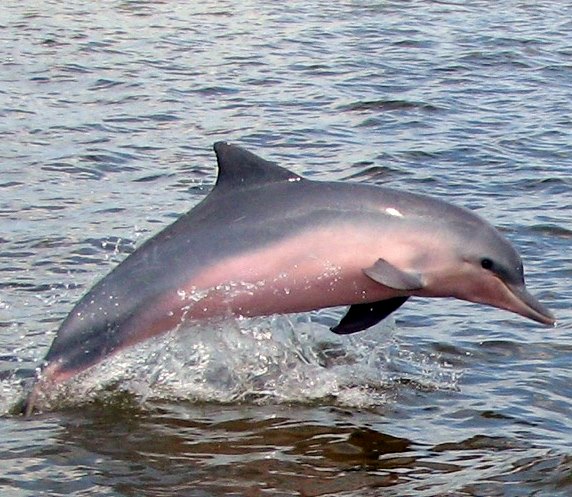Most other lodges only offer 1 lodge and thus a limited variety of ecosystems around that lodge, and that’s why they normally have 3-5 day packages – there’s not enough variety to merit more time. Fortunately the owner of the Amazonia lodges is a biologist and so he was able to develop programs that fully show the variety that the jungle can offer. That is why most people can stay a week and not be bored. In fact, some people stay 2-3 weeks to explore! The quality of the operations has garnered top ratings on Tripadvisor and various publications and from our happy, satisfied clients through the years.
- Look down from canopy platforms and ziplines
- Hike into varzea forest behind lodge; where it is highly probable to see pygmy marmosets, owl monkeys, yellow-crowned brush tailed rates, wire-tailed manakins, barber bees. Also possible to see black tamarins, saddle-backed tamarins, trogons.
- Hike to Lake Tapaje, explore by canoe.
- Canoe into tahuampa forest (flooded forest), canoe past giant ficus trees, see hoatzin birds, horned screamers, look for caiman on observation platform.
- At some point in the future, there will be Amazon Manatees here.
- Motorboat to terra firme forest, hike into frog valley. See beautiful little poison dart frogs
- See bat cave; braver people can hike through bat cave.
- Motorboat to Lake Charo to see pink dolphins, swimming. En route look for squirrel monkeys, sloths, raptors.
- Fish for piranha, peacock bass, arapaima, huge amazon catfish and more
- Visit native village of El Chino. Visit artisania cooperative. Visit with shaman. Visit farm. Visit school.
- On the boat ride to the Research Center they stop to see bats, sloths, monkeys, raptors, toucans.
- They have over 100 km of hiking trails from the research center, most of the trails are laid out in a grid to facilitate the scientific collection of population data. The trails go through several ecosystems, including bajial, high and low restinga, palm swamp and terra firme. You can see many different species of monkeys, including brown and white capuchins, saki monkeys, titi monkeys, squirrel monkeys, pygmy marmosets, moustached tamarins, saddle-backed tamarins, and sometimes uakaris, as well as giant tayra weasels and tamandua anteaters. A high density of jaguar live here but these are rarely seen.
- Boating the various lakes and rivers you often see caiman as well as the highly endangered giant river otters.
- Hiking to Lake Yarina (full day) we can see hoatzins on their nests, blue and yellow macaws and howler monkeys.
- most of the camping trips are done from here.
More Reasons To Go There
Rankings by Trip Advisor:
#1 in Loreto province
#1 in all of the Amazon (out of more than 200 lodges)
#1 in Specialty Lodging in all of Peru
#2 in Specialty Lodging in all of South America
When National Geographic was doing their ecolodge ratings a few years ago, Amazonia was also rated #1 in the Amazon basin for contribution to conservation.
No Malaria, Zika, Dengue, Yellow Fever
The only species of mosquito that carries Zika virus, dengue and yellow fever is Aedes aegypti, and the only species that carries malarial parasites in Peru is Anopheles darlingi. These species of mosquito breed in water that is alkaline, which in the Iquitos (as well as out of Puerto Maldonado) area is found in water originating in the Andes (much minerals like calcium, phosphorus and magnesium from marine fossil sedimentation). These species of mosquito only survive for 2-3 weeks and does not stray more than 100 meters from the place where it hatched. In the Tahuayo River basin they do not have these mosquito species, because the water ecology is highly acidic, coming not from the Andes (they are on the other side of the Amazon River) but from swamps in the interior of the ACRCTT conservation zone, where phenolic chemicals leach from jungle plants into the standing water. If you put your hand in the water in the rivers and lakes you can see the red color tint of the water. This indicates high acidity, water in which Aedes aegypti and Anopheles darlingi cannot reproduce. For this reason, no medical prophylaxis (which especially with malaria pills may cause side effects) is required.
Private guides/guide skills
There is no better way to experience the Amazon then with a private guide. All their guides are certified in first aid wilderness training, fluent in English, and frequently tested to make sure their information on rainforest biology is up to date. The guides are all permanent employees, not on temporary contracts, with full health, retirement and paid vacation benefits. With such benefits they can attract and keep the best personnel.
Contribution to Conservation & Animal Welfare
Amazonia was instrumental at creating the 1 million acre (445,000 Ha) reserve, the Area de Conservacion Regional Comunal Tamshiyacu Tahuayo (ACRCTT). This reserve is recognized nationally by the government of Peru. Scientists have documented the greatest diversity of flora and fauna yet found in any lowland Amazon basin site, in the ACRCTT.
Meaningful contribution to the indigenous community
The leading ecotourism project in the world in terms of its contributions to the indigenous population. The tour company is currently rebuilding a clinic for the native people (it built the original clinic in 2006), funds ¾ of the clinical staff, and assists in hospital care for native people who have illnesses beyond the capacity. The ecotourism business also is building a high school and assists in technical school education of selected students who wish to continue beyond high school. Other projects have included the construction of a center for the women’s economic cooperative as well as support for the cooperative.
Leading Contributor to Scientific Research
A leading ecotourism contributor to conservation related scientific research. Among the many scientific projects supported are Dr. Janice Chism’s long term study describing a new species of Saki monkey.


 RSS Feed
RSS Feed
